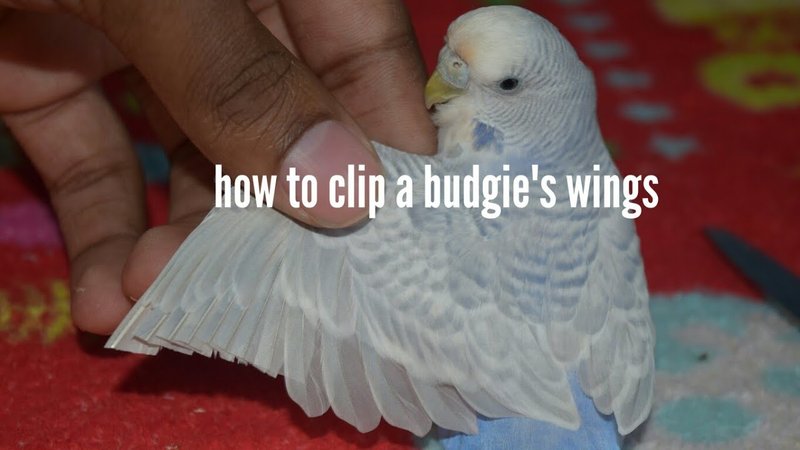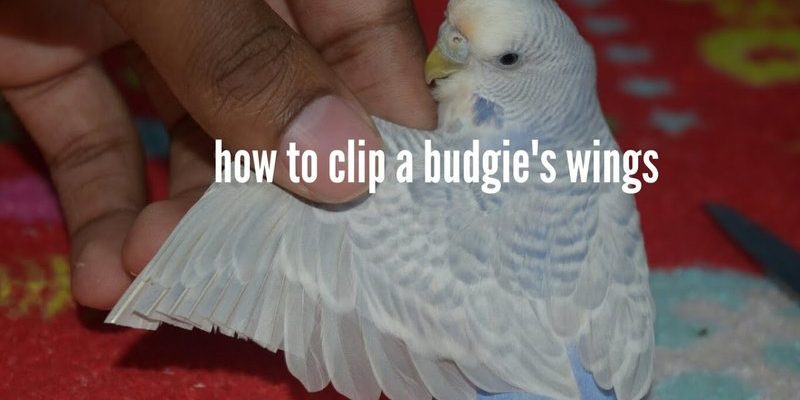
Now, before we dive into the how-to part, let’s talk about why you might want to clip your budgie’s wings. Think of it as a balancing act. On one hand, you want your budgie to enjoy flying and fluttering around your home. On the other hand, you also want to protect them from potential dangers like windows, ceiling fans, or even other pets. So, let me explain everything step-by-step, so you can clip those wings safely and confidently.
Understanding the Basics of Wing Clipping
Clipping a budgie’s wings is mainly about keeping them safe. The purpose of wing clipping isn’t to hinder their ability to fly entirely but to limit their range. When done correctly, it allows your budgie to stay grounded while still offering them some mobility.
Before you start, it’s important to know which feathers to clip. Budgies have two types of wing feathers: primary and secondary. The primary feathers are the long ones at the edge of their wings, and those are the ones that enable strong flight. By trimming just a few of these, you can ensure that your budgie won’t take off unexpectedly while still allowing them to flap around a bit.
Gather Your Supplies
Before you begin, you’ll need to gather a few supplies. Having everything ready can make the process smoother and less stressful for both you and your budgie. Here’s what you’ll need:
- Bird-safe scissors or clippers: These should be specifically designed for use on birds to ensure safety.
- Soft towel: This can help gently restrain your budgie without hurting them.
- Calm environment: Find a quiet space where your budgie feels safe.
Getting these tools ready in advance can help reduce anxiety. When your budgie senses that everything is calm and organized, they’re more likely to relax during the clipping process.
Preparing Your Budgie for the Clipping Process
Once you have your supplies, it’s time to prepare your budgie. To start, hold your budgie gently and wrap them in a soft towel, leaving their head and wings exposed. This “bird burrito” technique keeps them calm and prevents sudden flapping.
While you hold them, take a moment to speak softly to them. Birds are incredibly perceptive, and your soothing voice can help ease their nerves. It’s essential to create a peaceful atmosphere, so choose your words carefully.
You might be wondering how to tell if your budgie is stressed. Watch for signs like heavy breathing or rapid wing flapping. If they seem overly anxious, take a step back, and give them some time to relax before trying again. Patience is key here.
How to Clip the Wings Safely
Now, here’s where things get a little technical, but don’t worry—I’ll guide you through it.
1. Identify the Primary Feathers: Start by gently spreading your budgie’s wing. Look for the primary feathers—the long ones you want to clip. You should see about 10 to 12 of these feathers on each wing.
2. Choose the Feathers to Clip: You don’t want to cut all the primary feathers, as that could prevent your budgie from gliding gently to the ground. Instead, focus on cutting just the outermost 2 to 4 feathers on each wing.
3. Make the Cut: Using your bird-safe scissors or clippers, make a clean cut at the base of the selected feathers. Be careful not to cut too close to the skin, as this could hurt your budgie.
4. Check Your Progress: After clipping, check to ensure that your budgie can still flap their wings, but not gain much height. The goal is to make flying more of a challenge without causing harm.
Post-Clipping Care for Your Budgie
After clipping, give your budgie some space to adjust. They may feel a little off-balance at first, but this is perfectly normal. Make sure they have plenty of toys and things to explore in their cage to keep them entertained.
It’s also crucial to monitor them for a few days following the clipping. Look for any signs of distress or changes in behavior. If they seem unusually quiet or withdrawn, it might be worth checking in with your vet for reassurance.
Common Mistakes to Avoid
Like anything, there are a few common pitfalls to watch out for when clipping your budgie’s wings. Here are some mistakes to avoid:
- Clipping Too Many Feathers: Only clip a few feathers at a time. Clipping too many can prevent your budgie from gliding safely.
- Using Regular Scissors: Always opt for bird-safe scissors. Regular scissors can cause injury.
- Not Preparing Your Budgie: Going straight into the clipping process without calming your budgie can create unnecessary stress.
If you can steer clear of these mistakes, you’ll have a much smoother experience. Remember, it’s all about creating a safe environment for both you and your budgie.
Alternatives to Wing Clipping
While clipping wings is a common practice, it’s not the only option out there. Some budgie owners choose to let their birds fly freely while taking extra precautions. Here are a couple of alternatives:
1. Bird-Proofing Your Home: If you’re worried about your budgie flying into hazards, consider bird-proofing areas of your home. This could involve installing screens on windows and removing any potential dangers.
2. Using a Flight Harness: Some budgie owners opt for a flight harness, which allows their birds to fly safely outdoors while being securely attached to their human. This way, your budgie can stretch those wings without flying away.
Each of these options has its pros and cons, so think about what works best for your lifestyle and your budgie’s personality.
Final Thoughts on Wing Clipping
Clipping a budgie’s wings is an important part of responsible pet ownership. It’s about finding that sweet spot between safety and freedom. With the right preparation and approach, you can keep your budgie happy and safe while ensuring they have a little room to roam around.
Remember, it’s always a good idea to consult a vet if you’re unsure about any step of the process. They can provide expert advice tailored to your particular budgie’s needs. Now that you know how to clip a budgie’s wings safely, you’re well on your way to keeping your feathered friend safe without hindering their spirit. Happy bird-keeping!

